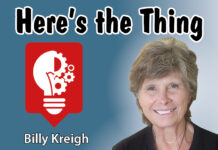If you were asked to define communication, where would you begin? In the past several years, I have heard people, often parents, bemoan that their teenage kids no longer know how to communicate. They fear that staring at the phone, playing video games, and watching YouTube constantly has rendered their teens incapable of carrying on any level of communication beyond a few “uh-huhs,” garbled mumbles, and maybe a slight head nod. I cannot argue with anyone that communication has taken a real turn when it comes to anyone 35 or younger. Whether it is better or worse or just different, will be a topic another day.
Today, I am thinking that it is not the younger generation I am troubled with in regards to the whole concept of communication. Communication is a science and an art. All living entities have differing methods, modes, and procedures for communicating. Think about it. Birds do it, bees do it, butterflies do it, wolves do it, pigs do it, heck fire, even trees do it! Don’t take my word for this phenomenon – trees communicating with each other – read the book The Hidden Life of Trees by Peter Wohleben, and prepare to be fascinated.
If trees communicating among themselves is a too otherworldly and esoterical for a spring Wednesday, then let’s stick strictly to human communication. There are a bazillian techniques we utilize in the science aspect of communication. Words, written or spoken, gestures (yep, I thought of that finger also), body language and posture, codes, like the Morse code, watching TV, scanning the internet, FB, reading the thoughts of others, tone of voice, braille, sign language, eye contact, group and organization communication, memos, touch, listening…..well, I think we have the idea.
Of all of these, while each and every one is intriguing, I choose to focus on the use of verbal communication. Words are definitely a component of the “science of communication.” They are extremely beneficial much of the time, but words can also be problematic. An example of this is words very often do not carry the same meaning or even similar weight when spoken and heard. Let’s say, for instance, that I say the word “mom.” OK, unless you are one of my brothers, when I say “mom,” you probably do not visualize or think of my mom. If I say “freedom,” we may not have the same meaning. If I say “home,” we probably do not have the same visual, thought, or even emotional response. Depending on how our lives have gone so far, we usually “see” those words in our own lens.
Those are simplistic examples. Imagine how complicated and convoluted sharing thoughts, information, or feelings can become when we meander into the realm of words such as: compassion, equality, right, wrong, meaning of life and death, politics, philosophy, history, winners, losers….the list is exhaustive.
It is true that almost any word we can think of can be used in whatever way the speaker intends or the listener receives. Probably that contributes to so many misunderstandings and misinterpretations. Now using language to intentionally be obtuse, pejorative, offensive, or just your plain basic annoying is not what I am referring to at this particular moment. I refer to people who genuinely and sincerely want to communicate.
What a privilege it is to discover how others view this world and this life. How limiting it would be if we chose only to communicate or hear those who think and believe exactly the same way we do. Think about all that is sacrificed when we do not encourage or even acknowledge others who have a different idea or a thought that is opposite to what we think. Imagine, for a moment, what we miss if we do not hear, consider, discern what is being said by someone who even thinks something we have never even considered before in our whole entire lives!
Hearing, questioning, contemplating – none of these require accepting. We can encounter differences without accepting them. We can learn about what others are thinking without incorporating their thinking into our own. We can question, deny, disagree, discard the very notion, become upset, angry….we can do any or all of these. The simple truth is: we cannot do any of those things legitimately until we understand what is being said. Lack of understanding renders productive communication not only ineffective, but impossible. That is the basis of the science of communication.
We are fortunate to reside in a country where we also can think for ourselves about virtually every single thing. We not only can think, but we can believe and accept what makes the most sense to us. This is why a primary component of the science of communication is critical thinking. Just because I hear it or read it does not necessarily equate to truth (another one of those slippery words). Sometimes recognizing or even finding truth can be difficult. Guess it depends on how badly we want it.
Now, that is a very cursory look at the science of communication; how about the art of it? Well, that is maybe a bit simpler. The art involves the 7 Cs: clear, concise, concrete, correct, coherent, and courteous. If we desire honest and meaningful communication, each of those words will help us get there. A person can try really hard to cover all 7 Cs in his discourse, but if he is speaking to someone who already “knows exactly what I think” or one who hears but does not listen, then attempting honest discourse is in vain.
Here’s the thing: Communication is always a two-way venture – at minimum one speaker (writer) and one listener (reader). If I merely want to state what I think, or force another to think exactly like I do (that might be a somewhat scary proposition), I can choose that route. I can repeat ad nauseam, I can yell and drown out any other voice, I can browbeat, threaten, coerce, or shun you, but I cannot refer to that as communication. And about those 7 Cs, the last one is courteous. How about if we cannot be courteous, let’s agree to never accept or settle for anything less than being civil.
bkreigh@adamswells.com
———
Editor’s Note: This is one of a series of articles and opinions written by a group of retired and current teachers — LaNae Abnet, Ken Ballinger, Billy Kreigh, Kathy Schwartz, and Anna Spalding. Their intent is to spur discussions at the dinner table and elsewhere. You may also voice your thoughts and reactions via The News-Banner’s letters to editor.



